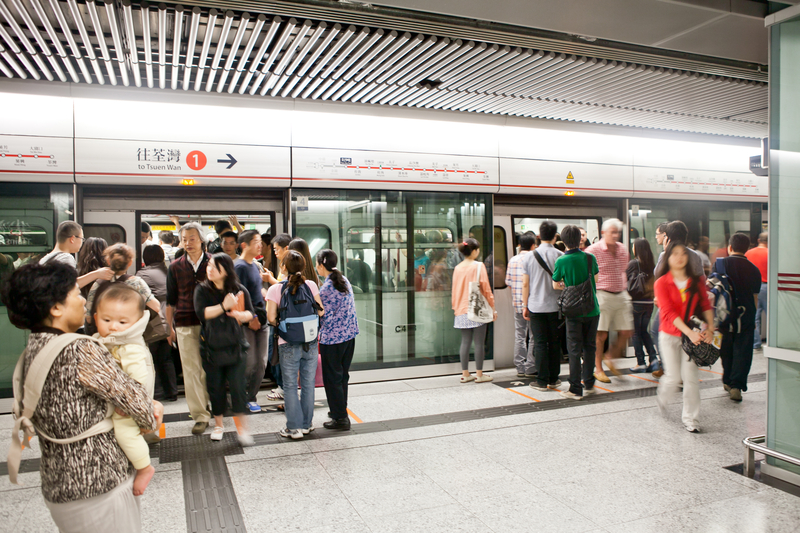
2023 was a big year in public transit. UK bus patronage outside of London returned to pre-pandemic levels for the first time - brilliant news in a country still impacted by ongoing bus driver strike action and frequent rail service cancellations and delays.
So, how can we continue improving patronage amidst a challenging operating environment? We think there is a significant opportunity for the UK transit industry to innovate and grow by leveraging data and analytics.
In too many instances, operators and authorities rely on outdated legacy systems and processes to understand on-time performance and manage their vehicle fleets. But it has become all too clear that these systems aren’t up to the task of processing and understanding the data that’s needed, leading to an inaccurate and out of date view of the transit network. Equally, many of these information technology systems are siloed, which means they aren’t able to integrate alongside new systems that promise more effective insights.
With easy-to-access, reliable data and analytics, however, a reshaped public transit sector can provide more appealing mass transit solutions and well-connected cities for every passenger.

In many respects, there’s no need for a major overhaul to adopt a better approach – a wealth of valuable transit data already exists. Ensuring this data is reliable and can be converted into actionable insights – which many authorities struggle with, even when they have experienced analysts on their team – is a crucial next step.
Success stories from across the globe demonstrate the difference this can make. Take the Intermodal Transport Data Sharing Program in Hong Kong, which showcased the value of successfully integrating transport datasets from different operators and modes of transit. A report on this initiative concluded that the programme provided potential for “better services planning and co-ordination across different public transport operators”.
“With easy-to-access, reliable data and analytics, a reshaped public transit sector can provide more appealing mass transit solutions and well-connected cities for every passenger”
Additionally, MobilityData in Canada recognises that discovering data feeds from across the world is a challenge. Its directory of global General Transit Feed Specification (GTFS) and GTFS-Realtime feeds, such as location, status and fare data, means operators can make full use of transit data to better understand network performance.
There are also global examples of how data-driven approaches to transit can deliver benefits more widely. For instance, South Korea’s capital, Seoul, was awarded the Smart City 2022 title, receiving special recognition for its Smart Seoul platform, which promotes digital inclusion policies across communication, mobility, education, safety and tech utilisation.
These initiatives underline the potential of a smarter approach to data and analytics. They also require the right systems to be in place and a willingness to collaborate – including between the private and public sector – to deliver improvements across society.
For the UK transit sector, there are five major benefits a best practice approach to data and analytics could deliver, even in the short term…
1. A clear view of the network
Smart use of the latest data and analytics solutions can empower our operators and authorities by providing them with accurate and timely overviews of their networks.
The right data allows patterns and correlations to be uncovered, empowering transit planners to predict future scenarios or adapt operations based on existing performance. With schedules optimised and resources allocated more effectively, the entire network stands to benefit.
This extends to ensuring different suppliers in a network can work together to provide deeper insights. Platforms that can weave together data from disparate systems can unlock a rich, data-driven picture of network performance. Our collaboration with providers like Transit ensure we can offer a network-based view for decision makers as well as a customer-oriented analysis of the transit network.
This insight offers greater control and visibility to authorities, while improving the passenger experience.
2. New mobility solutions that meet demand
With high-quality data solutions and standardised data formats, authorities can better support the delivery of Mobility as a Service (MaaS) initiatives that integrate different forms of transit into a single platform to effectively meet commuter requirements.
Cities are constantly evolving, often led by community-driven initiatives that shape how people live and move around. Active mobility options like walking and cycling can be even more successful when they are intentionally integrated into the public transit network.
High-quality data solutions and standardised data formats enable authorities to design, integrate and adjust these options into a holistic network. These also provide insights into how the network can be further shaped, the effectiveness of tactical urbanism experiments and where to invest.
3. Increased cost-effectiveness
The public transit sector must also manage its finances carefully due to high inflation and constrained funding. It has never been more important to make data-driven decisions while prudently managing costs. Digital solutions that simplify complex data streams can make it easier for non-specialists to do more with data, empowering existing teams to make high-quality decisions every day. By harnessing new technologies that can analyse numerous data streams simultaneously, reliable insights become accessible to a wider audience.
Employing specialist data analysts can come at a considerable cost, so alleviating routine reporting requirements can free up precious time to focus on deeper work. These increased efficiencies can subsequently be reinvested into the transit network, further boosting the quality of service offered to passengers.
4. Boosting bus driver morale
With bus drivers striking partly in response to the stress levels they face, better data solutions have an important role to play in creating more efficient networks that empower bus drivers.
With a clear overview of the network, authorities can build realistic schedules, adjust run times, and find solutions to challenging routes. By eliminating stress-inducing and unachievable timetables, we can boost bus driver morale and job satisfaction, which in turn could improve networks by ensuring retention and reducing strike action or absenteeism.
5. Sustainability gains
By breaking down data silos, connected data and analytics solutions enable governments to meet their Net Zero targets by offering commuters a reliable, enjoyable alternative to cars and planes.
Scheduled and actual performance data can be overlaid with insights like traffic light priority, connected to passenger demand data, and intelligently optimised to reduce dwell time and determine more efficient routes and service frequency. This enables continuous improvement of the network, in line with the dynamic nature of cities. This can all serve to reduce emissions and create a more sustainable transit sector.
Global initiatives already demonstrate the power of data in enhancing public transit services. The UK’s public transit sector is also well-placed to realise these benefits, ensuring public transit offers new levels of efficiency, cost-effectiveness, and sustainability.

ABOUT THE AUTHOR
Miki Szikszai is CEO of Snapper Services











